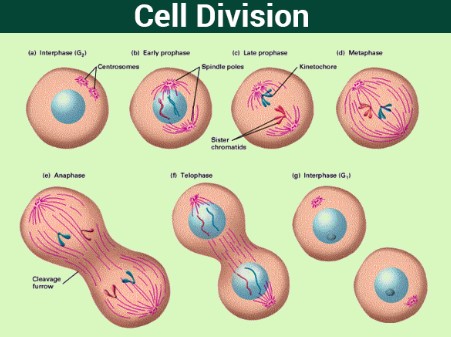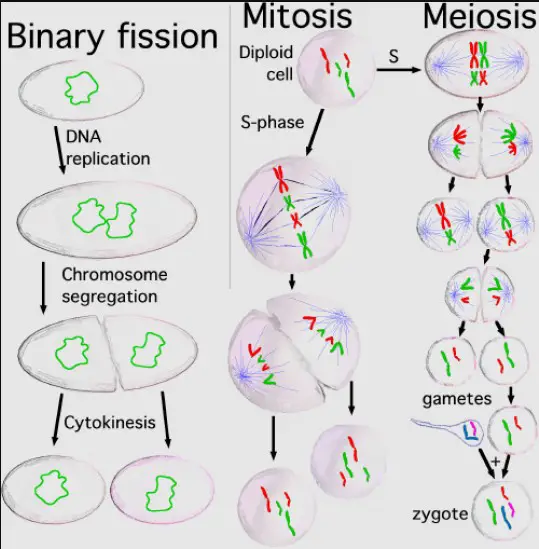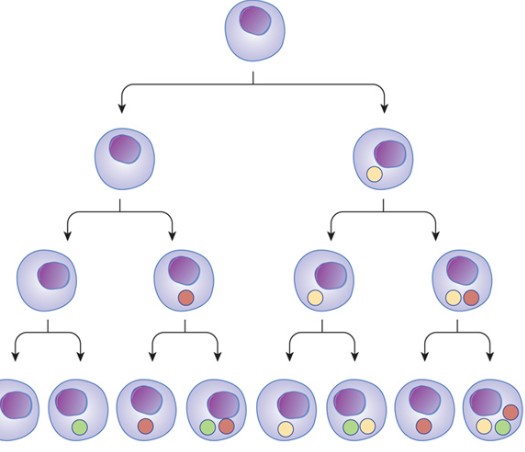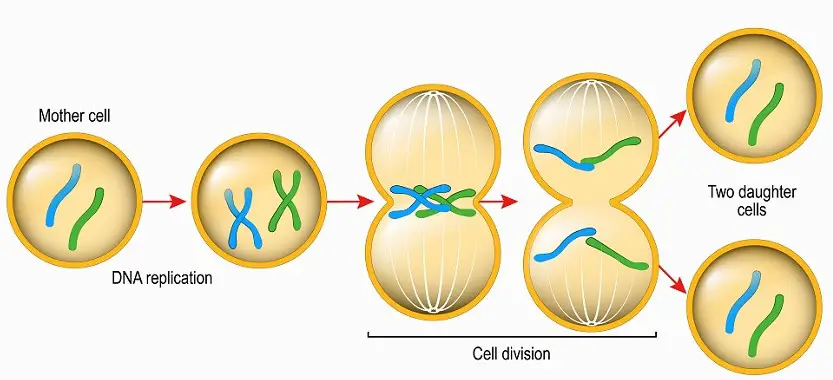The concepts of cellular differentiation and cell division are cornerstones in understanding the complexity of biological systems. These processes are fundamental to the development, growth, and maintenance of all living organisms. They illustrate the intricate dance of cells as they multiply and specialize, laying the foundation for the vast diversity of life forms on our planet.
Cellular differentiation is the process by which a less specialized cell becomes a more specialized cell type, playing a distinct role in the body. In contrast, cell division is the process by which a cell divides into two or more daughter cells, a critical mechanism for growth, repair, and reproduction. Together, these processes contribute to the dynamic and adaptable nature of life, enabling organisms to develop complex structures from a single cell and maintain them throughout their lifetime.
These biological phenomena are not just crucial for understanding life at the molecular level but also have significant implications for medicine and biotechnology. Advances in understanding cell division and differentiation have paved the way for groundbreaking treatments, including regenerative medicine and cancer therapies. The balance and regulation of these processes are vital for health, with dysregulation often leading to disease.

Basic Concepts
Cells: The Building Blocks
Cells are the fundamental units of life, forming the foundation of every organism on Earth. From the tiniest bacteria to the largest whales, every living thing is made up of cells. They perform a myriad of functions, from absorbing nutrients to converting energy, and they replicate to allow growth and healing in organisms.
- Definition: A cell is the smallest unit of life, often considered the building block of biology.
- Function: Cells provide structure for the body, take in nutrients from food, convert those nutrients into energy, and carry out specialized functions.
Genetic Blueprint
At the heart of every cell is the DNA (Deoxyribonucleic Acid), the molecule that holds the instructions for the development, functioning, growth, and reproduction of all known living organisms and many viruses.
- Role of DNA: DNA contains the instructions needed for an organism to develop, survive, and reproduce. It does this by controlling protein synthesis, which dictates cell function.
Cell Division
Overview
Cell division is a critical process where a single cell divides into two or more daughter cells. This process is essential for growth, repair, and reproduction in organisms.
- Definition: The process by which a parent cell divides into two or more daughter cells.
- Purpose: Cell division is crucial for the growth of organisms, tissue repair, and reproduction.
Types of Cell Division
There are primarily two types of cell division: mitosis and meiosis.
Mitosis
Mitosis is the type of cell division responsible for growth and repair in multicellular organisms. It results in two daughter cells that are genetically identical to the parent cell.
- Process: Mitosis involves several phases – prophase, metaphase, anaphase, and telophase – each facilitating the equal distribution of chromosomes to the daughter cells.
- Significance: Mitosis allows organisms to grow and replace cells that have been damaged or have died.
Meiosis
Meiosis, on the other hand, is crucial for sexual reproduction. It results in four daughter cells, each with half the number of chromosomes of the parent cell.
- Process: Meiosis consists of two successive divisions, meiosis I and meiosis II, reducing the chromosome number by half and introducing genetic diversity.
- Significance: Meiosis ensures genetic diversity through recombination and segregation and is essential for the production of gametes (sperm and eggs).
Regulation
The process of cell division is tightly controlled by a variety of factors to ensure that cells divide at the right time and that each daughter cell receives the correct number of chromosomes.
- Factors: Proteins and enzymes regulate the cell cycle, ensuring cells only divide when necessary.
Division and Health
Abnormal cell division can lead to diseases such as cancer. Understanding the mechanisms of cell division is crucial in the development of treatments for such diseases.
- Connection to diseases: Uncontrolled cell division can lead to tumors, while defective cell division can result in genetic disorders.

Cellular Differentiation
Overview
Cellular differentiation is the process by which a cell changes from one cell type to a more specialized cell type, enabling the vast diversity of cells in an organism.
- Definition: The process through which a cell becomes specialized in order to perform a specific function.
- Purpose: Differentiation is essential for the development of tissues and organs in an organism.
Role in Development
Differentiation plays a pivotal role in the development of an embryo into a fully formed organism, allowing cells to take on specific roles.
Pathways to Differentiation
The path a cell takes to become differentiated is influenced by its environment, genetic makeup, and interactions with other cells.
- Factors: Genetic factors and signals from the cell’s environment guide the differentiation process.
Types of Differentiation
Cells can differentiate into a variety of types, such as muscle cells, nerve cells, and blood cells, each serving unique functions within the organism.
- Examples: Muscle cells for movement, nerve cells for signal transmission, and blood cells for transport of nutrients and oxygen.
Differentiation and Regeneration
Differentiation is not only crucial during development but also plays a key role in the repair and renewal of tissues in adults.
- Healing and tissue renewal: Specialized cells are essential for the repair of tissue damage and the replacement of worn-out cells.

Comparison
Key Differences
Cellular differentiation and cell division are two pivotal processes in biology, each playing a unique role in the life of organisms. To understand their contributions, it’s crucial to highlight the key differences between them:
- Purpose: Cell division is aimed at increasing cell numbers for growth and repair, while differentiation focuses on cell specialization for various functions.
- Outcome: Division results in daughter cells that are identical to the parent cell (mitosis) or contain half the genetic material (meiosis). Differentiation leads to cells with specific structures and functions.
- Role in Development: Division is essential in early development, growth, and tissue repair. Differentiation is crucial for developing specialized tissues and organs.
- Genetic Regulation: Differentiation involves the selective activation and repression of specific genes, leading to varied cell functions. Cell division is controlled by a cycle that ensures DNA is replicated and distributed evenly.
Impact on Growth and Development
Both cell division and cellular differentiation significantly impact an organism’s growth and development, contributing to organismal complexity in distinct ways:
- Cell Division enables organisms to grow from a single cell to a multicellular entity. It also allows for the replacement and repair of cells, maintaining an organism’s health and functionality.
- Cellular Differentiation gives rise to the diverse cell types necessary for the complex structure and function of multicellular organisms. Through differentiation, cells develop unique capabilities that allow for the formation of specialized tissues and organs, adding to the organism’s complexity and adaptability.
Case Studies
Stem Cells
Stem cells embody the potential for both cell division and differentiation, making them a pivotal subject in biological and medical research.
- Role in differentiation and division: Stem cells can self-renew through cell division, giving rise to more stem cells or differentiate into various cell types depending on the body’s needs. This dual capability is essential for growth, development, and tissue repair.
Cancer Research
Cancer research offers profound insights into the consequences of abnormal cell processes.
- Insights from abnormal cell processes: Cancer is essentially the result of uncontrolled cell division and the failure of normal differentiation processes. Studying cancer cells helps researchers understand how cell division becomes deregulated and why differentiation fails, leading to the development of targeted cancer treatments.
Future Directions
Biotechnology Advances
The field of biotechnology is rapidly advancing, with stem cell therapy and regenerative medicine at the forefront of potential treatments for a myriad of conditions.
- Stem cell therapy and regenerative medicine: These therapies rely on harnessing the power of stem cells to regenerate damaged tissues and organs. By understanding and manipulating the processes of cell division and differentiation, scientists aim to develop treatments for diseases previously thought incurable, such as certain neurodegenerative conditions, heart disease, and diabetes.
Genetic Engineering
Genetic engineering holds the promise of directing the processes of cell division and differentiation to our advantage, offering revolutionary possibilities in medicine and biotechnology.
- Potential to control and guide cell processes: By editing the genes that control these cellular processes, scientists are working towards not only curing genetic disorders but also enhancing the body’s natural repair mechanisms. This includes efforts to make cells resistant to diseases, improve their repair capabilities, and even guide the formation of new tissues or organs in vivo.

Frequently Asked Questions
What is Cellular Differentiation?
Cellular differentiation is the process through which a cell changes from one cell type to a more specialized cell type, enabling the formation of various organs and tissues in an organism. This specialization allows cells to perform specific functions within the body, contributing to the organism’s overall function and health.
How Does Cell Division Differ from Differentiation?
Cell division is the process of a parent cell dividing into two or more daughter cells, essential for growth, repair, and reproduction. Unlike differentiation, which is about acquiring specialized functions, cell division focuses on increasing cell numbers. Both are crucial but serve different roles in the organism’s lifecycle.
Why is Understanding These Processes Important?
Understanding cellular differentiation and cell division is crucial for insights into developmental biology, disease mechanisms, and the creation of medical treatments. It aids in developing strategies for combating diseases like cancer, where cell division is unregulated, and in advancing regenerative medicine, where differentiation is harnessed to repair or replace damaged tissues.
Conclusion
The intricate processes of cellular differentiation and cell division underscore the complexity of life at its most fundamental level. They are essential mechanisms that drive the growth, development, and renewal of all living organisms. By exploring these processes, scientists and researchers unravel the mysteries of biology, paving the way for innovations in medicine and biotechnology.
The future promises further discoveries in understanding these cellular mechanisms, offering hope for new therapies and treatments. As we continue to explore the cellular landscape, our knowledge will expand, bringing us closer to answering some of the most profound questions about life itself and enhancing our ability to treat and prevent disease.

